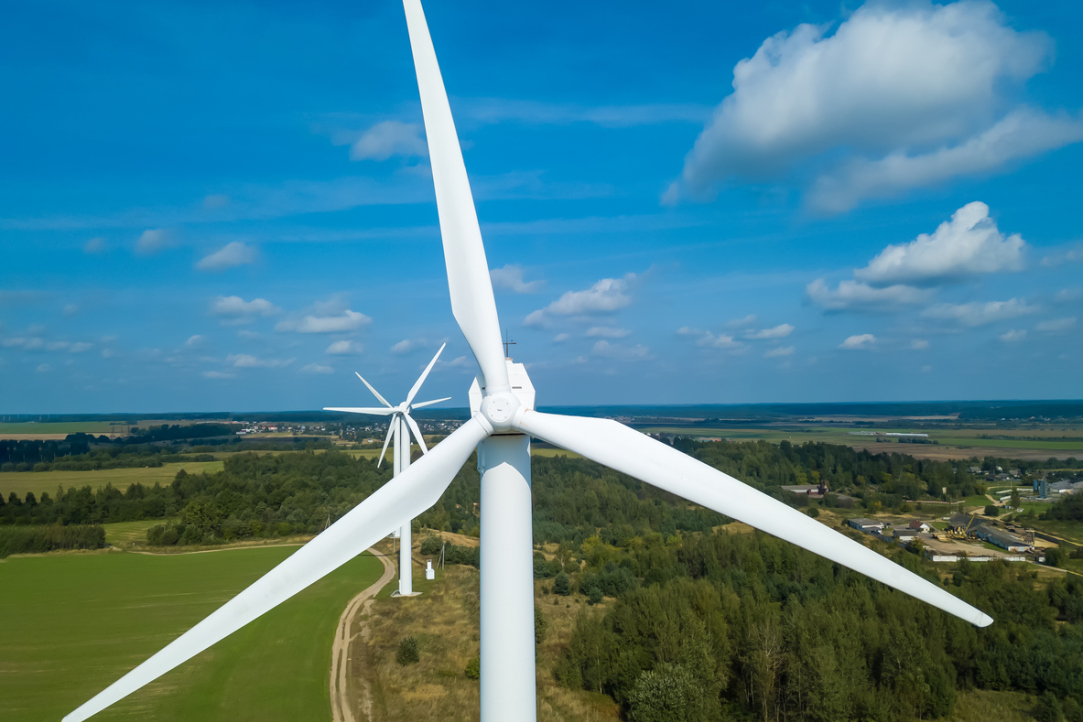Green Energy Patents Boost Company Profitability

For nuclear energy, the increase can be up to 1.6%
An ESG strategy—Environmental, Social, and Corporate Governance—not only helps preserve the environment but can also generate tangible income. Thus, the use of renewable energy sources (RES) and green technologies in the energy sector enhances return on investment and profitability. In contrast, higher CO2 emissions result in lower financial performance. This has been demonstrated in a collaborative study by the HSE Faculty of Economic Sciences and the European University at St. Petersburg. Their findings have been published in Frontiers in Environmental Science.
In recent years, green energy technologies have made significant advancements. Governments and businesses invest hundreds of billions of dollars in developing renewable energy sources (RES), nuclear energy, and electric transportation. In 2020, their share accounted for 40% of all investments in the energy sector, totalling $400 billion. In the European Union, spending on green energy is 3.5 times higher than on traditional energy. Meanwhile, China has reduced investments in the gas and oil sectors by 40% to focus on developing RES. Increasingly, research demonstrates that adopting green technologies can have a positive impact on company profitability.
Elena Makeeva, Associate Professor at the HSE Faculty of Economics, Konstantin Popov, Research Assistant at the HSE Corporate Finance Centre, and Olga Teplova, Research Fellow at the European University at St. Petersburg, have investigated how investments in green energy impact the profitability of energy companies in the BRICS countries. The researchers studied 63 largest firms in the BRICS countries and examined their key financial performance indicators, including return on assets (ROA), return on invested capital (ROIC), and market capitalisation.
CO2 emissions and patents related to three primary types of green energy—renewable energy technologies, combustion technologies with mitigation potential, and nuclear energy technologies—were considered as independent variables. China leads among BRICS member countries in all types of patents, with its share reaching 94% for patents in the field of renewable energy and 89% for patents related to hybrid energy systems.

The model also incorporated the company's revenue and investments, along with the per capita GDP of the company's home country, as controls. The authors constructed several models to establish a connection between investments in green technologies, carbon dioxide emissions, and the return on assets and investments, and market capitalisation of companies.
They have found that higher CO2 emissions significantly reduce company profitability and negatively affect market capitalisation: a 1% increase in carbon dioxide emissions results in nearly a 2% decrease in company profitability. The return on investment decreases even further, by 5% to 7%, along with a decrease in market capitalisation. Conversely, the more 'green energy' patents a company registers, the greater its profitability. The return on assets increases by 0.7% on average, and patents in the field of nuclear energy result in the largest increase of up to 1.6%. The return on investment has been found to increase by 2% to 3%. The researchers note that patents for renewable energy technologies contribute significantly only to ROIC, whereas combustion technologies with mitigation potential and nuclear technologies positively influence all financial performance indicators of companies. The authors also advocate for further advancements in nuclear power technology, since a nuclear power plant is a powerful, stable, and low carbon energy source with a long operational lifespan.
However, it should be noted that investments in green energy typically involve long-term commitments and do not yield immediate financial returns. This study demonstrates that businesses prioritising social and environmental responsibility in their operations can eventually achieve significant profits.

Associate Professor, Faculty of Economics, HSE University
The development of green energy should be a priority for BRICS countries, and investing in infrastructure and improving legislation are crucial factors for an expansion of low-carbon technologies in the electric power industry.
See also:
Electrical Brain Stimulation Helps Memorise New Words
A team of researchers at HSE University, in collaboration with scientists from Russian and foreign universities, has investigated the impact of electrical brain stimulation on learning new words. The experiment shows that direct current stimulation of language centres—Broca's and Wernicke's areas—can improve and speed up the memorisation of new words. The findings have been published in Neurobiology of Learning and Memory.
Artificial Intelligence Improves Risk Prediction of Complex Diseases
Neural network models developed at the HSE AI Research Centre have significantly improved the prediction of risks for obesity, type 1 diabetes, psoriasis, and other complex diseases. A joint study with Genotek Ltd showed that deep learning algorithms outperform traditional methods, particularly in cases involving complex gene interactions (epistasis). The findings have been published in Frontiers in Medicine.
Cerium Glows Yellow: Chemists Discover How to Control Luminescence of Rare Earth Elements
Researchers at HSE University and the Institute of Petrochemical Synthesis of the Russian Academy of Sciences have discovered a way to control both the colour and brightness of the glow emitted by rare earth elements. Their luminescence is generally predictable—for example, cerium typically emits light in the ultraviolet range. However, the scientists have demonstrated that this can be altered. They created a chemical environment in which a cerium ion began to emit a yellow glow. The findings could contribute to the development of new light sources, displays, and lasers. The study has been published in Optical Materials.
Genetic Prediction of Cancer Recurrence: Scientists Verify Reliability of Computer Models
In biomedical research, machine learning algorithms are often used to analyse data—for instance, to predict cancer recurrence. However, it is not always clear whether these algorithms are detecting meaningful patterns or merely fitting random noise in the data. Scientists from HSE University, IBCh RAS, and Moscow State University have developed a test that makes it possible to determine this distinction. It could become an important tool for verifying the reliability of algorithms in medicine and biology. The study has been published on arXiv.
Habits Stem from Childhood: School Years Found to Shape Leisure Preferences in Adulthood
Moving to a big city does not necessarily lead to dramatic changes in daily habits. A study conducted at HSE University found that leisure preferences in adulthood are largely shaped during childhood and are influenced by where individuals spent their school years. This conclusion was drawn by Sergey Korotaev, Research Fellow at the HSE Faculty of Economic Sciences, from analysing the leisure habits of more than 5,000 Russians.
Russian Scientists Reconstruct Dynamics of Brain Neuron Model Using Neural Network
Researchers from HSE University in Nizhny Novgorod have shown that a neural network can reconstruct the dynamics of a brain neuron model using just a single set of measurements, such as recordings of its electrical activity. The developed neural network was trained to reconstruct the system's full dynamics and predict its behaviour under changing conditions. This method enables the investigation of complex biological processes, even when not all necessary measurements are available. The study has been published in Chaos, Solitons & Fractals.
Researchers Uncover Specific Aspects of Story Comprehension in Young Children
For the first time, psycholinguists from the HSE Centre for Language and Brain, in collaboration with colleagues from the USA and Germany, recorded eye movements during a test to assess narrative skills in young children and adults. The researchers found that story comprehension depends on plot structure, and that children aged five to six tend to struggle with questions about protagonists' internal states. The study findings have been published in the Journal of Experimental Child Psychology.
Scientists Propose Novel Theory on Origin of Genetic Code
Alan Herbert, Scientific Supervisor of the HSE International Laboratory of Bioinformatics, has put forward a new explanation for one of biology's enduring mysteries—the origin of the genetic code. According to his publication in Biology Letters, the contemporary genetic code may have originated from self-organising molecular complexes known as ‘tinkers.’ The author presents this novel hypothesis based on an analysis of secondary DNA structures using the AlphaFold 3 neural network.
See, Feel, and Understand: HSE Researchers to Explore Mechanisms of Movement Perception in Autism
Scientists at the HSE Cognitive Health and Intelligence Centre have won a grant from the Russian Science Foundation (RSF) to investigate the mechanisms of visual motion perception in autism. The researchers will design an experimental paradigm to explore the relationship between visual attention and motor skills in individuals with autism spectrum disorders. This will provide insight into the neurocognitive mechanisms underlying social interaction difficulties in autism and help identify strategies for compensating for them.
Scholars Disprove Existence of ‘Crisis of Trust’ in Science
An international team of researchers, including specialists from HSE University, has conducted a large-scale survey in 68 countries on the subject of trust in science. In most countries, people continue to highly value the work of scientists and want to see them take a more active role in public life. The results have been published in Nature Human Behaviour.


